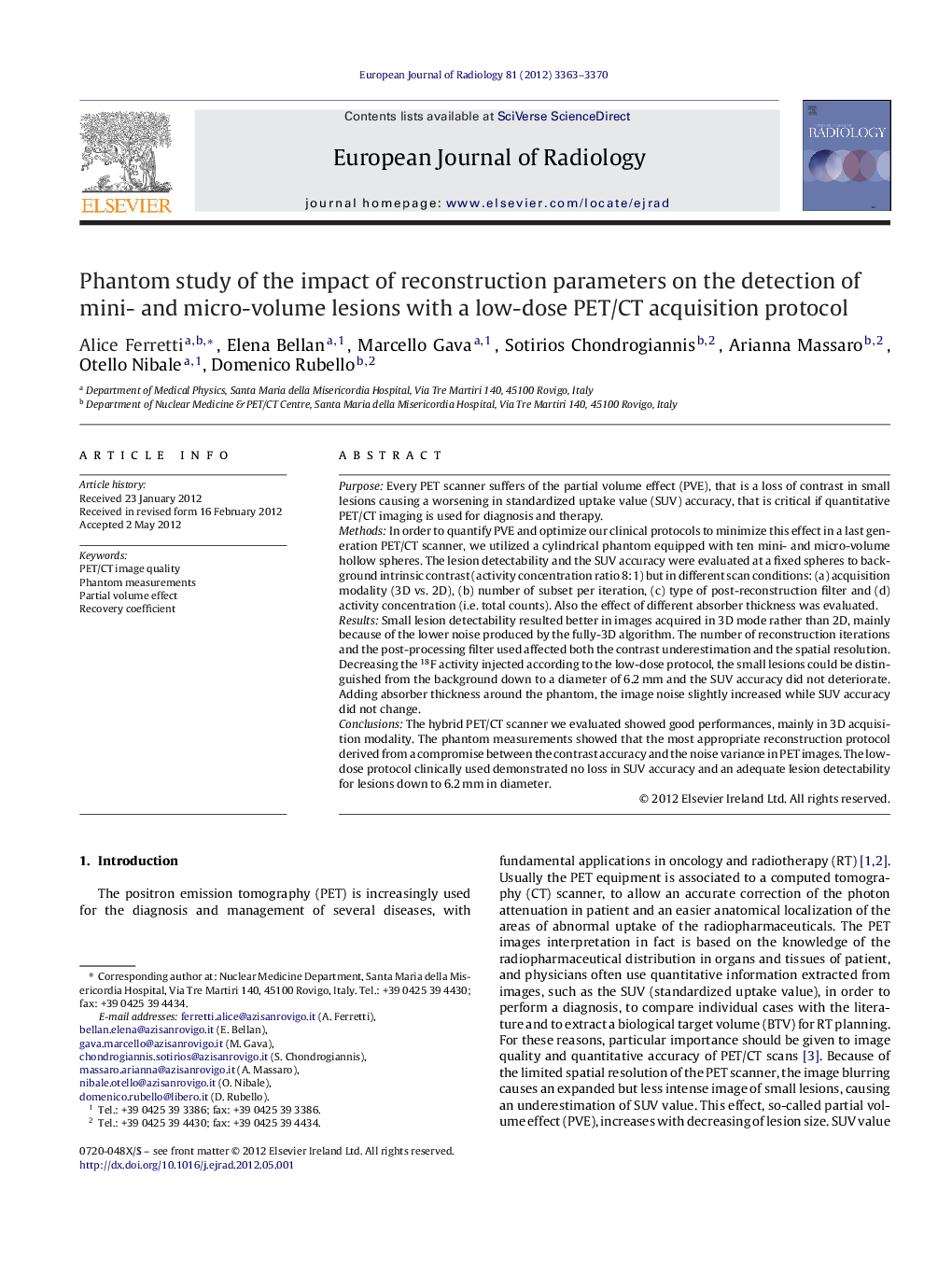| کد مقاله | کد نشریه | سال انتشار | مقاله انگلیسی | نسخه تمام متن |
|---|---|---|---|---|
| 6244308 | 1609784 | 2012 | 8 صفحه PDF | دانلود رایگان |

PurposeEvery PET scanner suffers of the partial volume effect (PVE), that is a loss of contrast in small lesions causing a worsening in standardized uptake value (SUV) accuracy, that is critical if quantitative PET/CT imaging is used for diagnosis and therapy.MethodsIn order to quantify PVE and optimize our clinical protocols to minimize this effect in a last generation PET/CT scanner, we utilized a cylindrical phantom equipped with ten mini- and micro-volume hollow spheres. The lesion detectability and the SUV accuracy were evaluated at a fixed spheres to background intrinsic contrast (activity concentration ratio 8:1) but in different scan conditions: (a) acquisition modality (3D vs. 2D), (b) number of subset per iteration, (c) type of post-reconstruction filter and (d) activity concentration (i.e. total counts). Also the effect of different absorber thickness was evaluated.ResultsSmall lesion detectability resulted better in images acquired in 3D mode rather than 2D, mainly because of the lower noise produced by the fully-3D algorithm. The number of reconstruction iterations and the post-processing filter used affected both the contrast underestimation and the spatial resolution. Decreasing the 18F activity injected according to the low-dose protocol, the small lesions could be distinguished from the background down to a diameter of 6.2Â mm and the SUV accuracy did not deteriorate. Adding absorber thickness around the phantom, the image noise slightly increased while SUV accuracy did not change.ConclusionsThe hybrid PET/CT scanner we evaluated showed good performances, mainly in 3D acquisition modality. The phantom measurements showed that the most appropriate reconstruction protocol derived from a compromise between the contrast accuracy and the noise variance in PET images. The low-dose protocol clinically used demonstrated no loss in SUV accuracy and an adequate lesion detectability for lesions down to 6.2Â mm in diameter.
Journal: European Journal of Radiology - Volume 81, Issue 11, November 2012, Pages 3363-3370